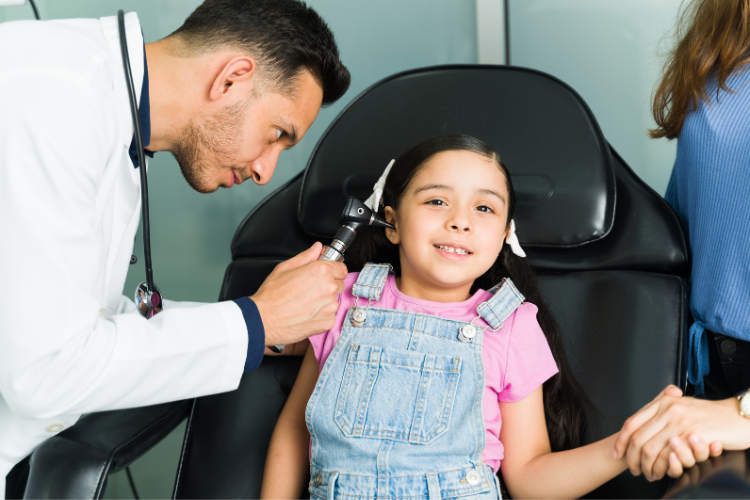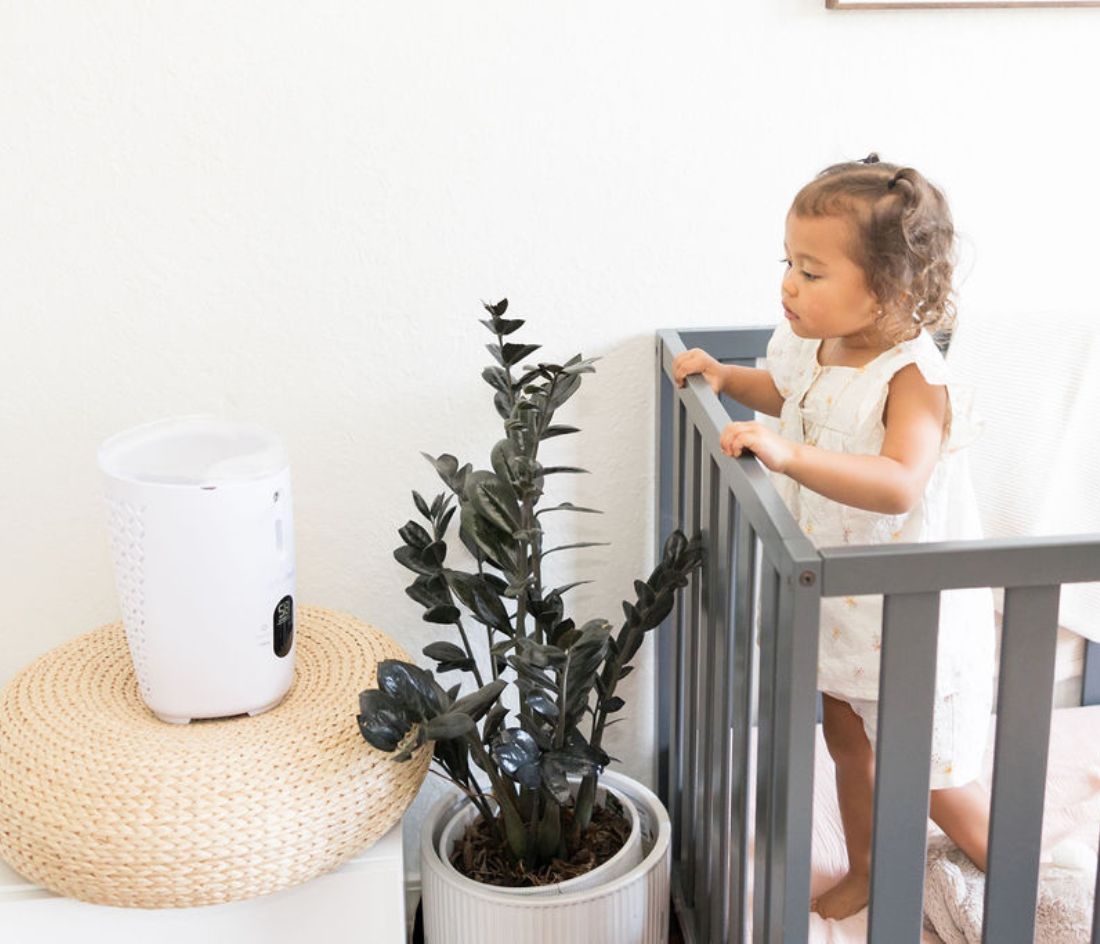Guest Post by Katy Fleming, MA, LPC, BSN, RN
You may suspect another ear infection when your kiddo starts tugging at their ears with sleepless nights and continued tears.
It’s not a secret that ear infections are common in children. 5 of 6 kids will experience an ear infection before their third birthday.
After an infection, expect some fluid to remain in the middle ear. Let’s talk about why fluid gets trapped and when to seek help for your little ones.
What Parents Need to Know About Ear Fluid After an Ear Infection
Let’s discuss the ear anatomy to understand the role of middle ear fluid in infections.
The middle ear is an air-filled space behind the eardrum. It contains tiny bones that transmit sound vibrations from the eardrum to the inner ear.
Eustachian tubes are narrow tubes connecting the middle ear to the throat. These tubes regulate pressure and drain fluids from the middle ear.
When viruses and bacteria enter these spaces, the trouble begins.

Why Does Fluid Build Up After An Ear Infection?
A sore throat, cold, or allergies can cause the ear tubes to swell, especially in children with small, ineffectively draining eustachian tubes.
When the eustachian tubes are blocked, mucus and fluid pool in the middle ear, which causes bacteria growth and infection to develop.
Over time, the eustachian tubes need to open and allow the fluid to drain. Even after the ear infection clears up, fluid buildup may remain.
Symptoms of an ear infection include:
- Ear pain
- Fever
- Fussiness
- Ear drainage
- Difficulty eating
- Trouble sleeping

Difficulty hearing, balancing, or speech delays are potential signs of trapped fluid in the middle ear.
Check out Dr. Steven Goudy, pediatric ENT surgeon and inventor of the NozeBot, explaining the role of fluid in ear infections on TikTok.
When Should We See a Doctor?
If your child still has fluid in their ears after three months, see your pediatrician for assessment and a referral to a pediatric ear, nose, and throat (ENT) specialist.
The build-up of fluid in the middle ear may lead to temporary hearing problems. You may need to repeat statements to your kiddo or find that they’re requesting to turn up the volume on the TV.
When hearing problems begin, the fluid may need draining by a medical professional. Some children with persistent ear infections or hearing loss due to the fluid will require surgically placed ear tubes.
Ear tubes are small ventilation tubes placed in the eardrum to allow increased airflow and fluid drainage. These tubes typically fall out on their own after 6-18 months.
Ventilation ear tubes are one of the most common pediatric surgeries in the United States.
Why Do Kids Get More Ear Infections?
Kids get ear infections more often than adults because of their small eustachian tubes, large adenoids, and developing immune systems.
It’s difficult for fluid to drain in children’s ears due to smaller, narrower, and more level eustachian tubes than adults.
Adenoids, the gland-like structure behind the nose, may interfere with the eustachian tube drainage in young children.
Finally, kids don’t have a fully developed immune system. For this reason, it’s harder to fight infections, and leads to increased illness.

How Can I Prevent Ear Infections?
Try some of these suggestions to reduce the risk of ear infections in your little ones:
- Avoid any exposure to secondhand smoke.
- Don’t give your baby a bottle in bed. Lying flat on their back may lead to fluid flowing into their eustachian tubes.
- Remain up to date on recommended vaccinations.
- Limit exposure to other sick children when possible.
- Clear excess mucus in your kiddo’s nasal passages with the NozeBot to help prevent infections.
One of the primary ways to prevent sickness is regular hand-washing. Teach your children how to properly wash their hands and encourage frequent washing to prevent the spread of germs.
Looking for more health and wellness tips? You’ll love these:
- 5 Body Safety Rules to Keep Your Children Safe
- What Parents Need to Know About Invasive Sinus Infections
- Sinus Infection 101: Diagnosing and Treating
- What to Do If Your Child Gets Burned
- 5 Tips for Remembering to Administer Medication
Contact your pediatrician to discuss any questions or to assess your child’s ear fluid buildup.
As a licensed counselor and registered nurse, Katy approaches freelance writing with years of experience and a unique perspective. Alongside her partner, Katy loves to travel the world and embrace other cultures from volcanoes in Iceland to villages in India.
The Nozebot is a battery-powered suction device designed to clear nasal congestion in babies and children.



